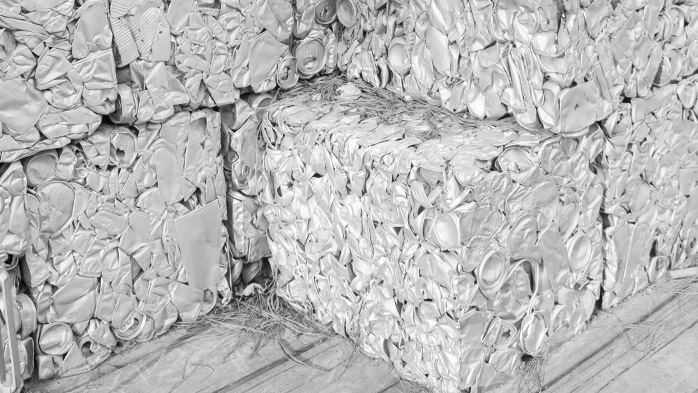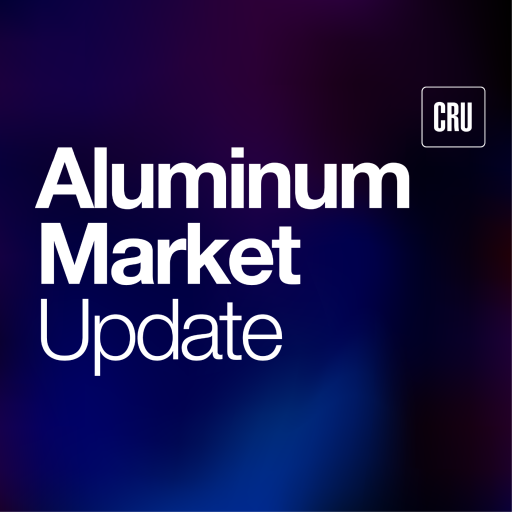Global Trade

November 25, 2025
AMU Community Chat: Meir on the Midwest premium, tariffs, and the 2026 outlook
Written by Stephanie Ritenbaugh
The Midwest premium has surged since June, reaching record highs this year after President Trump enacted 50% tariffs on the metal.
Now hovering in the mid-to-upper 80¢ per pound range, Edward Meir, a commodities analyst and contributor to AMU, said the rise has been “quite a shock.” While imports of aluminum have slowed, they haven’t stopped. The import tax makes up about 60¢ of the premium.
“Even if you count the tariff costs, it still makes sense to ship some metal from Canada into the US,” Meir said. “That still leaves a respectable margin coming in.”
Meir spoke last week during an AMU Community Chat on a wide range of topics affecting the aluminum market. He has covered base metals, precious metals, crude oil, and tropical commodities over the span of his four-decade career. Meir is also a former metals trader in aluminum, tin, and steel. He is well known for his market commentary as well as his consistent forecasting accuracy. You can check out the full webinar here.
Why isn’t more metal coming in with this high premium at play?
“I think part of the reason is you can’t really sell at 87¢ in terms of real volume,” Meir said. “You could maybe get some spot tonnage off, but you can’t really sell chunky amounts at those prices, and the forwards are actually much less than 87¢ as far as the curve is concerned.
“Having said that, it’s still a good level,” Meir continued. “It was interesting—Rio Tinto put in a surcharge for its aluminum exports just a couple of days ago of 1¢ to 3¢. I thought that was very low, and it tells me that they think the premium is pretty juicy as it is, and they kind of just threw the surcharge in just to say we want to make a little bit extra. But I think they’re happy with that level. And I wouldn’t be surprised if they start moving some metal in, if not necessarily to sell it, but at least to keep it in the US, so they’ll have it available in case things open up. So, net-net, I think metal will start to flow south soon, sooner rather than later.”
Tariff outlook
On Nov. 5, the US Supreme Court heard arguments on whether Trump acted within his executive power when he imposed tariffs through the IEEPA mechanism. The IEEPA tariffs, also nicknamed “liberation day” or “reciprocal” tariffs, are separate from the Section 232 tariffs, which cover steel and aluminum products, but not some raw materials.
Meir noted that the questions from the justices “has been very skeptical of the administration’s arguments on tariffs so far.”
“I think the plaintiffs have a very legitimate case, because if you’re importing baby carriages, where is the national security risk to that? Yet, you’re putting a lot of small businesses in the US out of work by arbitrarily imposing tariffs on them. So, I think the administration has a weak case on general imported goods.”
The Section 232 tariffs on aluminum and steel relies on a different statute, “and I think they’re on firmer legal ground there,” Meir said.
“But I think if the Supreme Court overrules the consumer goods, it might ripple through into our space, into the steel and tariff space, because I think there’ll be some nervousness that something might happen as well on the steel side or the aluminum side,” Meir continued.
“But our readers should remember that tariffs were never the purview of the president,” he said. “They used to reside in Congress, and I don’t know why, but they kind of gave that power up to the executive, sort of in the Nixon years, and it’s been there ever since. It hasn’t been used to this extent, obviously, but I think down the road, I think Congress should take back that power, and perhaps empower a panel, a trade panel of experts to kind of levy the tariffs, as opposed to kind of just throwing numbers out there.
Indonesia’s growth
Asked about China’s growing operations in Indonesia potentially causing a glut in aluminum, Meir said he has been watching China’s footprint in the country.
“If China does to aluminum in Indonesia what they did to nickel, we’re going to be in bad shape, because they moved into nickel, and they ramped it up from practically zero to millions of tons and hundreds of facilities that are just cranking out all sorts of nickel. And nickel prices have been depressed.”
Indonesia has 11 planned smelters totaling 13 million tons, with Chinese companies accounting for about 84%, according to a recent story in AMU.
“I’m watching Indonesia very carefully, and I think it’s going to be a problem,” Meir said. “And one last point, we’ve seen [the Indonesian government] clamp down on overproduction in copper and tin, but they haven’t done so in nickel and aluminum. That’s because the investor base in nickel and in aluminum are Chinese companies, whereas in copper and tin, they’re all kind of domestic companies. So they have more clout in controlling copper and tin, less clout in controlling nickel and aluminum.”
The outlook
Looking at prices on the horizon, Meir pointed out that so far this year, aluminum has traded between $2,300 to $2,900.
“I think next year, that range will shift a little higher, so I would say a reasonable downside target is $2,500, and maybe on the upside, we could get to around $3,200, assuming the tariffs thing kind of resolves.”
As for tariffs, Meir hopes that trade will move away from those duties and toward trade negotiations.
“That way, countries will know what to expect and not be subject to week-to-week changes,” he said. “We haven’t seen that yet—even with Canada and Mexico, the talks haven’t really started in earnest. What we would like to see is kind of like a NAFTA 3 come in, whereby it’s a comprehensive trade accord, and hopefully you can see a lot of these trade deals being made next year. That would be good for growth in general.”
“I also think the US housing market might thaw out next year as rates come down.” he said. “There’s even talk of having portable mortgages, so if you have your mortgage at 3%, you might be able to just carry it over to a new house. These are all exciting ideas, and I think it’ll free up the housing market and maybe give the economy an additional boost.”
“Of course, you have the Fed, who will likely cut rates again, probably in December, and a few times next year as well,” Meir said.
“All of these things are helpful for metals demand, hence the reason behind my slightly higher range on aluminum prices.”







